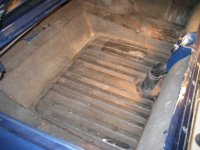robert campbell
Well-known member
- Joined
- Apr 10, 2007
- Messages
- 4,322
Hi folks.
I received a message from Paul regarding some of the questions and comments that have been posted here about his book. In it he does confirm that a Marti Report specifically states that Curtis Kaffer's CS was ordered by Lee Grey which I find interesting.
Here's his message, which is actually addressed to all the members at this site:
If there are some who have a different opinon or who would take issue or exception to what Paul had to say above please be aware that I'm not taking up a position as a spokesperson for Paul so don't expect me to address points that you may raise in response to Paul's message. He has been a long-time acquaintance of mine and I post this as a favor to him and to those on this site who are interested in what he has to say.
I'm aware that some here have their differences with Paul and I have no desire to involve myself in those differences. I think the common, positive goal we all share is establishing accurate information about our cars, as much as that is possible.
-DLedin
All,
I have seen some of the evidence shots from the new book. Kinda fishy if the car that is purported as a debut car was not accompanied by this special “elite” report that makes it the real deal. Why go to tell tail evidence such as rear shot of two cars that have the same alignment problem on the left side of the trunk? Why point at an exhaust tip that certainly is attached to new mufflers and pipe after 43 years?
Not to sound like Donald Trump, but I would like to see this special elite report. I have seen numerous elite reports and they do not drill down to the person who ordered the car. And Lee Gray was just another Ford guy back in February of 1968.
Now to the scripts. Below is a direct quote from the author in 2005. The information about templates and drilling came from this site between now and then. The author was hard over on this issue. I asked for one better side shot of a debut cars, but “wait for the book” was the answer. I have seen a side shot of the car that the author claims is the blue one on the stage. The script holes are in the traditional location of a line car and not a prototype. Now all of a sudden the script holes were drilled and haphazard.
And Arlie helped me with a final clue. There are some cars that have early taillight panels that make the gas cap appear “recessed” or inset inside the taillight panel. We have two known cars with his early panel. They are both very erly build dates with recessed rear reflectors. If you look closely at the “evidence” shot in the new book straight on the back of the debut car and the purported debut car, you will notice the dark ring around the gas cap of the debut car on the stage. It has the early taillight panel and the gas cap is recessed. The purported car does not. Certainly over the years the script may have been moved, the taillight panel replaced, but nope still has the original exhaust......
Guess I will look like “Donald t.” when the author brings forward that piece of paper that guarantees this a debut car..... See the authors quote from 2005 below on the script.
Rob
Re:2005 Registry Update Thread
--------------------------------------------------------------------------------
Thanks, Steve! I appreciate your comments. It has always been my hope to help folks restoring their GT/CS with good information.
Definately send me a few photos of your restoration. I want to include that in the book to encourage others to do the same, since these cars are nearing in age for complete restorations.
IF you could--also send video of the restoration, too. This is all very inspiring to others that are considering doing the same.
I invite everyone to send in some sort of photos and/or video of your restorations. I do have a ground-up resto (a famous one here) that I will document.
As for one of those "secrets", look at your rear quarters without the script. if you look along the side from the rear, you'll see the slightest "dimpling" of the sheet metal for the holes. The script holes were punched, not drilled at the factory.
-Paul N.



![IMG_0246[1].jpg](/forums/data/attachments/11/11893-d64c7b4e4f66df50cf7e38dec8bff131.jpg)
